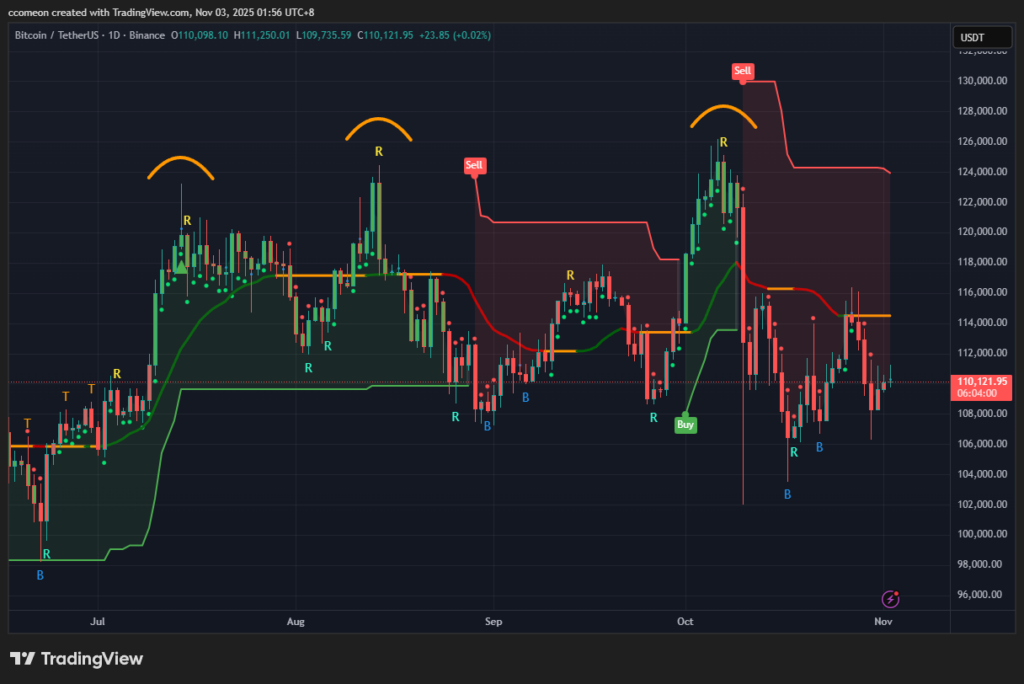Bitcoin’s “Uptober” Flop: Navigating Technical Headwinds and Macro Uncertainty
Last week, the crypto market witnessed an unexpected turn of events. Despite seemingly bullish catalysts – a Federal Reserve interest rate cut and a pause in the US-China trade war – these positive developments had already been priced in, leading to a classic ‘buy the rumor, sell the news’ scenario and a subsequent market correction. Bitcoin (BTC) found itself hovering around the $11,000 mark over the weekend, failing to uphold the traditional ‘Uptober’ rally and closing October down 3.69%.
This monthly decline marks a significant deviation from historical trends, as the last time BTC saw a negative October close was in 2018. That year, the crypto market was deep into a bear cycle, with Bitcoin plummeting an additional 36% in November. This historical parallel has fueled concerns among investors, raising fears that October’s dip could signal the onset of a new bearish phase for the leading cryptocurrency.

Indeed, Bitcoin’s current price action offers little optimism. As previously discussed, a closer look at the daily charts reveals a distinct ‘triple-top pattern.’ This concerning formation suggests that each time BTC has attempted to establish new highs, it has been met with sharp pullbacks, directly initiating a downward trend. For any hope of a short-term upward reversal, Bitcoin critically needs to reclaim the $11,400 level. However, given the prevailing trading sentiment and liquidity distribution, even maintaining the $11,000 support appears challenging. While short-term high-leverage contract distributions currently appear balanced, this data is often unreliable over weekends, necessitating a re-evaluation once US markets reopen.

Adding another layer of uncertainty is the ongoing US government shutdown. In just three days, this shutdown is poised to surpass the record for the longest in US history. Although reports suggest both political parties are working towards a resolution following President Trump’s return, the probability of reaching an agreement this week remains low. Consequently, the US is likely to continue suspending the release of crucial economic data, making it exceedingly difficult to forecast market volatility. Barring any unforeseen developments, the crypto market is expected to remain in a ‘liquidation-driven’ state, characterized by significant price swings and volatile ‘pinning’ actions on candlestick charts.
Disclaimer: This article is intended solely for market information purposes. All content and opinions are for reference only and do not constitute investment advice. They do not represent the views or positions of the author or BlockBeats. Investors should make their own decisions and trades, and the author and BlockBeats will not bear any responsibility for direct or indirect losses incurred by investors.





